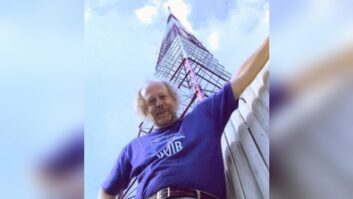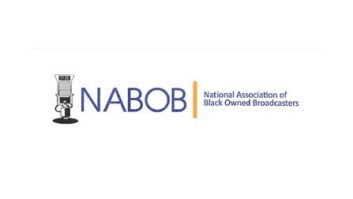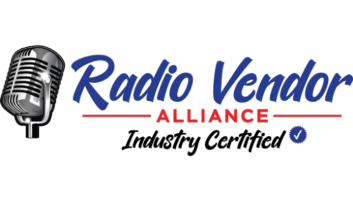AVON, N.Y.
In what is thought to be the first AM nighttime IBOC interference complaint filed with the FCC, Radio Livingston Ltd., licensee of WYSL in Upstate New York, claims that adjacent-channel IBOC noise from WBZ in Boston is interfering with its daytime and nighttime signals.
Observers are interested in the outcome of this case, which presents a face-off between a small standalone AM owner vocally opposed to IBOC on one side of the complaint, against a group-owned, big-market station owned by IBOC pioneer CBS Radio on the other.
Central to this case is whether the alleged interference is within WYSL’s protected contour; the station says it is. CBS-owned WBZ isn’t commenting publicly on the case.
The FCC said in its IBOC authorization text this year that interference cases would be handled case-by-case. A commission spokesman told RW then that mitigation in such cases could include the agency telling a station to lower the power level in one or both of digital sidebands, or even turning off the nighttime AM IBOC altogether.
WYSL operates DA-3, with 20 kW daytime, 13.2 kW critical hours and 500 watts at night on 1040 kHz. It is licensed to Avon, N.Y., about 25 miles south of Rochester. Robert Savage is president/CEO; he also worked many years as a programmer in larger markets for larger group owners. The station handles its own engineering in-house.
Bumpy IBOC Days at Cox, CitadelNeither Citadel nor Cox Radio have their AM IBOC issues resolved and it’s not clear when they will be.
Citadel drew attention for pulling back on nighttime AM IBOC operation, unexpectedly becoming the biggest broadcaster to do so with 10 involved stations.
Radio World reported in October that the company’s AMs had returned to daytime-only IBOC operation due to interference concerns. The owner has received interference complaints from listeners and stations on adjacent channels, the latter from both Citadel and non-Citadel stations in and outside the markets.
Most of the complaints were in the Northeast, Director of Corporate Engineering Martin Stabbert said in a subsequent interview at the end of October.
He said no formalized test and measurement plan is in place yet. Still to be decided is which of its stations would serve as test beds or parameters of the test.
Stabbert said earlier that other broadcast groups are welcome to take part in the tests; one broadcast group, also a member of the HD Digital Radio alliance, expressed interest, he told RW later.
An Ibiquity spokeswoman said the technology company has test plans for Citadel, but she couldn’t go into specifics.
Separately, as of late October, nothing had changed at Cox Radio, which earlier turned off IBOC on several AMs entirely. The broadcast group has self-interference concerns, which it said earlier causing a faint buzz in the background on some wide front-end Chrysler radios.
In the meantime, Cox tests the IBOC equipment it has purchased for its AMs but then shuts it off. Cox has 13 AMs and has converted about half, said Sterling Davis, vice president of engineering for Cox Broadcasting.
In response to a query in late October, Davis said he hasn’t heard anything lately from Ibiquity about the issue. He stressed that the self-interference concerns Cox has experienced are different than Citadel’s adjacent-channel interference issue.
An Ibiquity spokeswoman declined to comment on the Cox situation.
— Leslie StimsonCBS Radio’s WBZ operates unlimited hours DA-1 with 50 kW on 1030 kHz.
In his complaint, filed in late October, Savage claims adjacent-channel skywave to co-channel groundwave interference. The multi-page complaint, obtained by Radio World, includes affidavits from communications engineers and consultants William Sitzman and Barry McLarnon.
Savage says field tests reveal severe interference from WBZ’s IBOC signal at the WYSL 18 mV/m contour.
CDs filed with the complaint and provided to RW purport to show examples of the interference, including hiss, static, dropouts and double audio.
WYSL personnel spent more than 100 hours and drove more than 700 miles in field tests gathering data to back up its complaint, Savage said. They took measurements before and after Sept. 14, the first night AMs could run their IBOC transmitters overnight.
“Using a field-intensity meter, a portable multi-band receiver and digital audio recorder, signal strength was noted for both WYSL and WBZ at 14 locations within WYSL’s nighttime interference-free (NIF) contour (13.687 mV/m), and its 5 mV/m and 2 mV/m predicted contours on file with the FCC. Digital recordings were made of both stations.”
It’s worth noting that the 13.687 mV/m is WYSL’s NIF for analog only. McLarnon has calculated WYSL’s effective NIF including both analog and digital signal contributions to be 28.2 mV/m, more than twice the current value.
The measurement gear was a Potomac field intensity meter and a RadioShack DX-402 multi-band receiver feeding a Marantz PMD660 portable digital audio recorder.
Days later, the process was repeated as the audio recorder rolled; WBZ Engineering Manager Mark Manuelian, contacted by WYSL personnel by cellphone from the field, switched WBZ’s IBOC HD-R exciter on and off, according to Savage. Though Manuelian initially cooperated with WYSL, communication stopped shortly afterwards, according to Savage.
He said the data and audio recordings show WBZ’s upper IBOC sideband is interfering with WYSL’s analog signal at each contour point, during daytime, critical hours and nighttime hours.
“The WBZ IBOC skywave delivered to WYSL’s local coverage varies widely, in our experience,” states Savage in the report.
“The night Mr. Manuelian was cycling the WBZ IBOC exciter on and off for purposes of collecting data for this report, WBZ was delivering a skywave signal intensity ranging from about 1.5 to 4 mV/m.” More recently, WBZ has produced skywave exceeding 7 mV/m in the WYSL market, reports Savage, who filed his complaint Oct. 23.
In the complaint, Savage reports “WBZ’s digital sidebands were invading a WYSL measured signal strength exceeding 18 mV/m, almost four times the strength regarded as ‘city grade’ by the FCC, and far exceeding WYSL’s nighttime NIF of 13.687 mV/m.”
He fears AM propagation conditions will worsen in the winter.
“With a more medium-wave reflective ionosphere, frozen ground and snow cover, the adjacent-channel [IBOC] noise is likely to become markedly worse. … If allowed to continue unmitigated, the IBOC interference is likely to cause loss of advertising revenue and diminishment of WYSL’s market value as a broadcast property.”
Savage says he could potentially lose about $100,000 in nighttime ads for sports events this winter due to interference.
WBZ did not return several requests for comment; neither did the FCC. Ibiquity declined to comment. Savage said WBZ had not contacted him either as of late October.
This could be the first AM nighttime IBOC-related interference complaint the commission has received since stations were allowed to leave their digital transmitters on 24/7 on Sept. 14.
FCC Audio Division Chief Peter Doyle said the agency had received no such complaints as of mid-October.
‘Anti-IBOC Alliance’
Savage feels so strongly that IBOC in the hybrid mode is bad for AMs that remain analog, that he and friends Watt Hairston, chief engineer for WSM(AM) in Nashville, Tenn., and Jerry Arnold, director of engineering Midwest Communications in Terre Haute, Ind., have created what they call the “the Anti-IBOC Alliance,” with a Web site at www.stopiboc.com.
Though the Web site was being tweaked in late October, features include tips for filing interference-related complaints to the FCC and an “IBOC-AM Confessional,” where members can share stories of “being forced by management to install IBOC against their best professional judgment.”
On the site, Savage and his colleagues call for congressional investigation of what they call the “cruel steamrolling of independent AM operators, and a nighttime medium-wave morass certain to drive away what’s left of the dwindling AM-band audience.”
“It’s just not right,” said Savage.
While IBOC proponents have said there have been few AM-related complaints about nighttime service, “that’s largely because small-market AM operators don’t know what to do,” Savage argued, saying those owners are less likely to have a communications lawyer and consulting engineer at the ready.
With less than 70 AMs on the air at night with IBOC as of late October, Savage believes, “the scarcity of complaints isn’t surprising,” adding it would be a mistake to assume this means there isn’t interference.
As of early November, the site had some 50 registrants, though not all of them broadcasters, he said.
Will the effort make a difference?
Savage said he “doesn’t harbor illusions,” but added, “We have to take a stand and try to save our business.”
Ibiquity had no comment.












